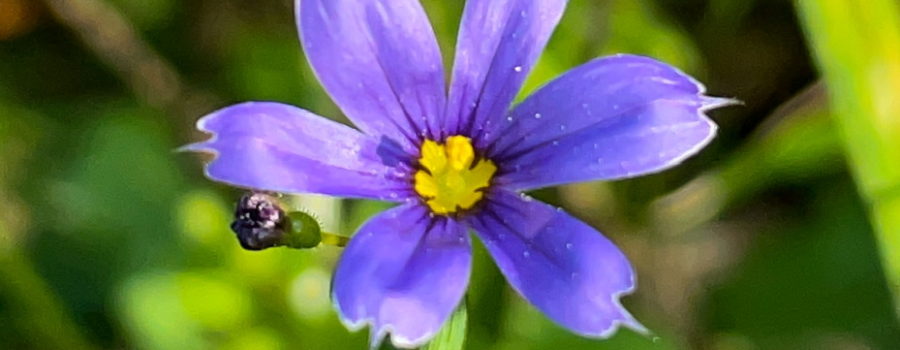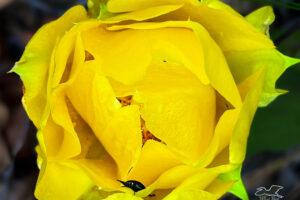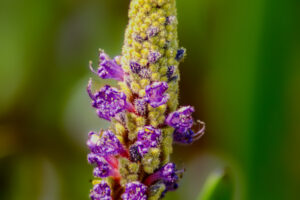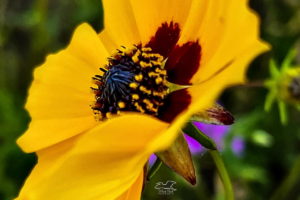Yet Another Beautiful Native Wildflower that People Love

The same beautiful spring afternoon that I found the lyreleaf sage and the dewberry flowers, while talking to one of my neighbors, I also found some some blue-eyed grass. It was quite the productive afternoon for photographing wildflowers! Every time I thought I had taken shots of everything in that area, I’d find something new! And all on about a thirty yard stretch of roadside! A few days later, I found more blue-eyed grass on the hill behind our kennels at work, and again in the woods behind my house.

So what is blue-eyed grass? The name is actually a little bit misleading. The plant does have long, narrow leaves and look like a grass, but the flowers give it away. Most grass flowers are small, and often pretty inconspicuous, but blue-eyed grass has bright blue flowers with gorgeous yellow centers. The flowers are relatively small when compared to things like azaleas or even phlox, but compared to true grass flowers, they are quite large. The reason for that is that blue-eyed grass is not really a grass at all. Instead, it is a member of the iris family (which also explains the blue flowers).

Blue-eyed grass likes moist, well drained soil with lots of direct sunlight, so roadsides, meadows, beach edges, and forest edges are great places to find it. It actually doesn’t like rich soil, either, so our Florida sand is perfect for it. In fact, if the soil is too rich, it tends to get fungal infections and root rot. Blue-eyed grass is also great for pollenating insects like sweat bees, small butterflies, bumble bees, and flies. Later in the season, when the plant seeds, it also provides good food for many small song birds. Blue-eyed grass not only reproduces through it’s seeds, but it also sends out rhizomes that allow it to spread in clumps, making it an ideal ground cover.

Like coral honeysuckle and phlox, blue-eyed grass is readily available for sale in garden stores since it is often used as an ornamental. There are several species of blue-eyed grass that grow wild here in Florida, but the narrow leafed (and most grass-like) type is what stores usually sell. Many people use blue-eyed grass for edgings or in butterfly gardens. A few even use it as an alternative to lawn grass since it is an evergreen, and although not aggressive (like mimosas or Japanese honeysuckle) it does spread readily. I have actually been considering this myself since I really don’t like mowing and cannot keep a mower running to save my soul. The awesome blue flowers every spring would be a nice bonus!





Recent Comments